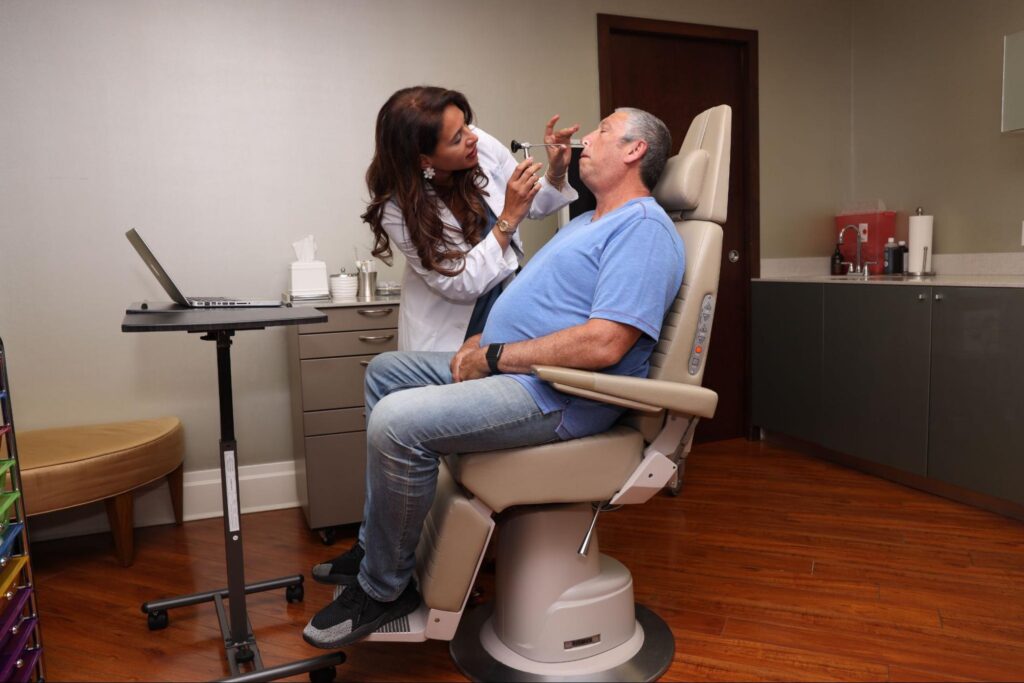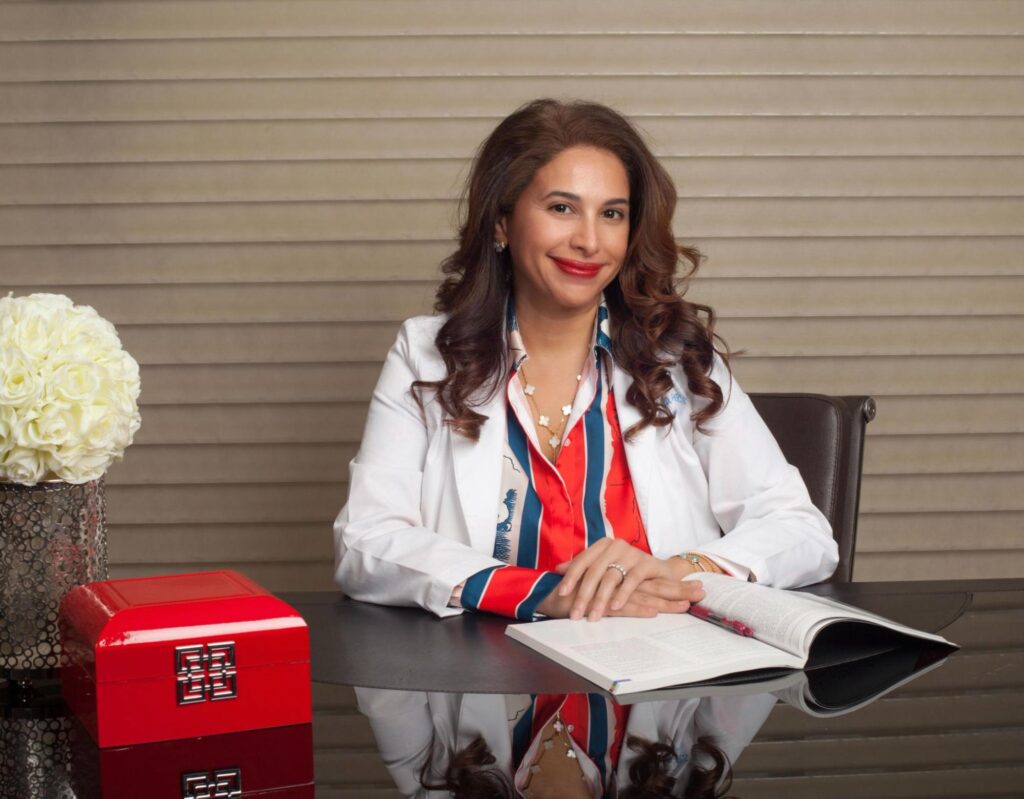Thinking about rhinoplasty can feel exciting and a little nerve-wracking. You might be wondering how it works, how you’ll feel, and what your results may look like. Dr. Tadrosand our team at the Center for Sinus, Sleep & Facial Plastic Surgerywant to help you learn the basics so you can confidently walk into your procedure. Here’s what you need to know before, during, and after your rhinoplasty procedurein New York City or Englewood.
Why Rhinoplasty?
People choose rhinoplasty for different reasons. You may want a more pleasing facial balance or an improvement in how you breathe. Some people have issues caused by an injury or genetics. Others are simply looking to refine the shape of their nose.
Whatever your goal may be, keep in mind that every nose is different. Your anatomy, medical history, and personal preferences all come into play. Dr. Tadros looks at your features as a whole and considers how to address your concerns in a safe way while addressing both form and function.
Selecting Your Surgeon
Finding the right doctor is a big step. You’re placing your nose—and your health—in their hands. It’s wise to look for a board-certified surgeon who has completed the proper training in facial plastic and reconstructive surgery or otolaryngology. Credentials and experience matter here.
Ask questions during your consultation.
Find out how many rhinoplasties they’ve performed. Look at before-and-after photos of past patients. Ask about their approach to reshaping the nasal bridge or tip and whether they also work on function (like breathing issues). A good surgeon listens to your goals and shares honest insights. That way, you’ll feel good about moving forward. On that note, you can read more about Dr. Tadros’ credentials here.
Before Your Surgery
What should you do to prepare for your procedure?
1. Initial Consultation
Your consultation is a chance to share your concerns. You’ll explain what you’d like to change or improve. We’ll then examine the structure of your nose. This exam might involve checking the inside of your nose to see if there are any blockages or structural issues affecting your airflow.
We may also take photos from various angles. You should mention past surgeries, allergies, or medications you take. You’ll usually discuss your overall health, as certain medical conditions can affect healing. Dr. Tadros might suggest blood work or other lab tests to confirm you’re ready.
2. Planning and Expectations
Ask any questions you have about the procedure. It’s helpful to know which parts of your nose your surgeon plans to adjust—bridge, tip, nostrils, or septum—and how that might affect your appearance.
Keep your expectations realistic. It’s also important to talk about how you want to look but remember that your final outcome depends on your bone structure, skin thickness, and healing. No two noses (or faces) are the same, so you shouldn’t expect a “one-size-fits-all” approach.
3. Pre-Op Instructions
Our teammay give you instructions to follow in the days or weeks leading up to surgery. These might include:
- Avoid certain medications: Some drugs, such as blood thinners, can increase bruising. Ask about any over-the-counter pills or herbal supplements you’re taking.
- Stop smoking: Nicotine can slow healing. If you smoke, you may need to pause this habit before and after your procedure.
- Arrange your schedule: Plan for some time off work or school. You’ll need rest, and it’s good to have a friend or family member around, especially for the first few days.
- Plan for a ride: Since you’ll be under anesthesia, you’ll need someone to drive you home on surgery day.

During the Procedure
Here’s the breakdown of the ins and outs of your rhinoplasty.
1. Anesthesia
On the day of your operation, you’ll meet with the surgical team. They’ll review your plan and get you prepped. Rhinoplasty usually involves general anesthesia, which means you’ll be fully asleep. In some cases, the doctor might use local anesthesia with sedation. Either way, you shouldn’t feel any pain during the procedure.
2. Incisions and Reshaping
There are two main approaches: “open” rhinoplasty and “closed” rhinoplasty.
- Open rhinoplasty: Dr. Tadros makes a small cut in the tissue between your nostrils (the columella). This allows the doctor to lift the skin and see the nose’s structure clearly. Open rhinoplasty often offers a more direct view for reshaping the tip and bridge.
- Closed rhinoplasty: Here, the doctor makes incisions inside your nostrils. There’s no cut on the outside. This approach can be good for simpler adjustments, but it depends on your nose and goals.
We then reshape the underlying bone, cartilage, or both. Our team may remove or add cartilage to achieve the desired shape. If breathing is a concern, the surgeon might address any structural issues that block airflow (for example, a deviated septum).
3. Wrapping Up
Once the work on your nose is done, Dr. Tadros repositions the skin and stitches the incisions. You might have a splint or cast on the outside of your nose to keep everything stable. Sometimes, soft packing or internal splints are placed inside your nostrils to support the structure. These are usually removed within a week or so.
After the Procedure
What happens when your rhinoplasty procedure is over?
1. Immediate Recovery
You’ll move to a recovery area once the surgery is done. Nurses will check your vitals and make sure you wake up safely from anesthesia. You may feel groggy or nauseous as you come around. This is normal.
You’ll likely wear a small cast or splint on your nose and any internal supports. You might have swelling around your nose and eyes. Bruising can appear beneath your eyes and on your cheeks.
2. Heading Home
Most rhinoplasty patients go home the same day but need an adult to drive them. Plan for some downtime. You’ll probably feel tired, and you may have tenderness or stuffiness in your nose. Keep your head raised, even when you sleep. Propping up your head with extra pillows can help reduce swelling.
3. Medications and Self-Care
Your surgeon may prescribe medication for pain or to avoid infection. Use it as directed. You might also get instructions for cleaning or caring for the incision sites. Follow them closely. Keeping the area clean is key to good healing.
4. Managing Swelling and Bruising
Swelling and bruising are normal parts of the healing process. They usually peak in the first few days. To help yourself feel better, you can:
- Use cold compresses: Gently rest a cold pack or chilled cloth on your cheeks or near your eyes. Don’t press it directly on your nose.
- Keep your head up: Sit upright and sleep with your head propped up on pillows.
- Stay hydrated: Drinking water helps your body heal.
5. Follow-Up Visits
Dr. Tadros will likely schedule a follow-up appointment about a week after surgery. They may remove your cast, splint, or stitches at this time. Another follow-up visit might occur a few weeks later and then again a few months down the road. During these visits, your doctor checks your progress and addresses any questions you have.
6. Long-Term Healing
Noses can take a while to settle. You’ll probably see changes in the first few weeks, but keep in mind that subtle swelling can stick around for up to a year. For most people, the biggest changes happen in the first few months. By the six-month mark, your nose should look and feel more stable. Still, tiny shifts may continue as your nose finds its final shape.

Surgical Rhinoplasty With Dr. Tadros
To schedule your appointment with Dr. Tadros at the Center for Sinus, Sleep & Facial Plastic Surgery, go here. We have teams on standby in New York and Englewood to answer all of your questions.

